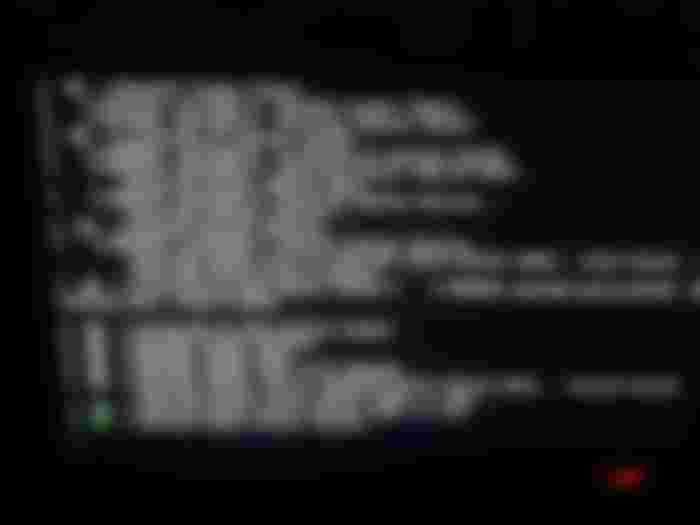Secrets in Linux part 01!
A Comprehensive Guide to Changing Partitions in Linux
When it comes to managing storage on a Linux system, one of the most fundamental tasks is changing partitions. Partitions play a crucial role in organizing and using disk space efficiently.
Whether you need to resize, create, delete, or modify partitions, understanding the process is essential for maintaining a well-structured and optimized Linux environment. In this comprehensive guide, we will walk you through the steps to change partitions in Linux, covering various scenarios and tools available at your disposal.
Table of Contents
Introduction to Partitions
Preparing for Partition Changes
Changing Partitions with fdisk
Resizing Partitions
Creating New Partitions
Deleting Partitions
Writing Changes
Advanced Partition Management with gdisk
Converting MBR to GPT
Changing Partition Types
Adjusting Partition Attributes
Resizing Partitions with partitions
Modifying Partitions using gparted
LVM: Dynamic Partition Management
Creating Physical Volumes
Creating Volume Groups
Creating Logical Volumes
Resizing Logical Volumes

1. Introduction to Partitions
Partitions are logical divisions of a physical disk that allow you to organize data, install operating systems, and manage storage efficiently. They act as isolated containers for different purposes, such as system files, user data, or swap space. Linux uses different partitioning schemes, with the two most common being MBR (Master Boot Record) and GPT (GUID Partition Table).
2. Preparing for Partition Changes
Before making any changes to partitions, it's crucial to back up your data. Partition modifications can potentially lead to data loss, so ensuring you have a recent backup is a safety net. Additionally, ensure you have a Linux live USB or CD on hand, as you might need it to make changes to certain partitions that are currently in use.
3. Changing Partitions with fdisk
fdisk is a traditional and widely-used command-line tool for partitioning disks in Linux. To start using fdisk, follow these steps:
Resizing Partitions
To resize a partition using fdisk, follow these steps:
Open a terminal.
Run sudo fdisk /dev/sdX, where X is the target drive.
Use the d command to delete the partition you want to resize.
Use the n command to create a new partition with the desired size.
Save your changes using the w command.
Creating New Partitions
To create a new partition using fdisk, follow these steps:
Open a terminal.
Run sudo fdisk /dev/sdX, where X is the target drive.
Use the n command to create a new partition.
Specify the partition size and type.
Save your changes using the w command.
Deleting Partitions
To delete a partition using fdisk, follow these steps:
Open a terminal.
Run sudo fdisk /dev/sdX, where X is the target drive.
Use the d command to delete the desired partition.
Save your changes using the w command.
Writing Changes
After making changes with fdisk, remember to use the w command to write the changes to the disk.

4. Advanced Partition Management with gdisk
gdisk is a more advanced partitioning tool that specializes in GPT disks. It offers additional features beyond what fdisk provides. To use gdisk:
Converting MBR to GPT
To convert an MBR disk to GPT using gdisk, follow these steps:
Open a terminal.
Run sudo gdisk /dev/sdX, where X is the target drive.
Use the r command to enter the recovery and transformation menu.
Select the g option to convert the MBR to GPT.
Save your changes using the w command.
Changing Partition Types
To change a partition type using gdisk, follow these steps:
Open a terminal.
Run sudo gdisk /dev/sdX, where X is the target drive.
Use the t command to change the partition type.
Specify the partition number and new type code.
Save your changes using the w command.
Adjusting Partition Attributes
To adjust partition attributes using gdisk, follow these steps:
Open a terminal.
Run sudo gdisk /dev/sdX, where X is the target drive.
Use the c command to change attributes.
Modify the attributes as needed.
Save your changes using the w command.
5. Resizing Partitions with partitions
parted is a versatile command-line partitioning tool that supports both MBR and GPT. To resize a partition using parted, follow these steps:
Open a terminal.
Run sudo parted /dev/sdX, where X is the target drive.
Use the resizepart command to resize the partition.
Specify the partition number and new size.
Save your changes.
6. Modifying Partitions using gparted
gparted is a graphical partitioning tool that provides a user-friendly interface for managing partitions. To use gparted, follow these steps:
Install gparted if not already installed (sudo apt-get install gparted on Debian-based systems).
Open gparted from the applications menu.
Select the target drive from the dropdown menu.
Right-click on the partition you want to modify and choose the desired action (resize, move, delete, etc.).
Apply the changes.
7. LVM: Dynamic Partition Management
Logic l Volume Management (LVM) offers advanced dynamic partition management capabilities. To use LVM:
Creating Physical Volumes
Open a terminal.
Run sudo pvcreate /dev/sdXn, where X is the target drive and n is the partition number.
Creating Volume Groups
Run sudo vgcreate <vg_name> /dev/sdXn, replacing <vg_name> with your preferred volume group name.
Creating Logical Volumes
Run sudo lvcreate -L <size> -n <lv_name> <vg_name>, specifying the size and logical volume name.
Resizing Logical Volumes
To resize a logical volume, run sudo lvresize -L +<size> /dev/<vg_name>/<lv_name>.
Changing partitions in Linux is an essential skill for effective storage management. Whether you're using command-line tools like fdisk, gdisk, and parted, or graphical tools like gparted, understanding the process of resizing, creating, deleting, and modifying partitions empowers you to optimize your storage infrastructure.
Moreover, exploring advanced techniques like LVM enhances your ability to dynamically manage partitions, ensuring your Linux system remains organized and efficient. Remember to exercise caution and always have backups before making any significant partition changes to avoid potential data loss.
With the knowledge gained from this comprehensive guide, you are well-equipped to navigate the world of Linux partitioning with confidence and precision.


awesome tutorial. Thanks for sharing. Hopefully, I will get to see your article again if I do get a chance to tinker around linux environment. The only touch so far I have with Linus is for listing down the files in the current directory and changing directories haha. I am just on the basic side, I guess.